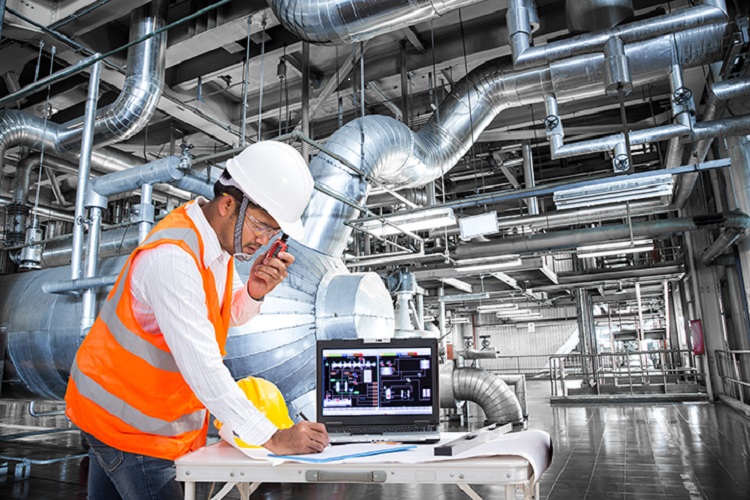Advent of Drones and Sensors Paves the Way of Smart Pipeline Monitoring Systems

18 Oct
2019
Pipelines are extensively used for the transportation of hydrocarbon fluids over millions of miles across the world and in the oil & gas industries. The structures of the pipelines are made to withstand various environmental loading conditions to ensure reliable distribution during transportation. However, pipeline leakage is one of the major causes of losses in the oil and gas industry let alone its serious ecological hazards. Thus, according to Allied Market Research, the pipeline monitoring systems market is expected to reach $7.37 billion by 2023, registering a CAGR of 7.5% from 2017 to 2023. The stringent regulations for safety and monitoring and increase in concerns and awareness regarding pipeline safety would be the major drivers.
However, technology has silently advanced in the field of pipeline monitoring. While the world has set its eyes on advancements of artificial intelligence (AI) and Big data, innovations have spurred the growth of the pipeline monitoring industry due to rise in need for serviceability of the aging pipeline infrastructure. Advanced sensing systems that leverage novel technologies such as wireless sensing, energy harvesting, embedded electronic computing, robotic systems can boost return on investments and reduce downtime required for monitoring. For instance, unmanned aerial vehicle (UAV) systems by Sky-Future offers visible or thermal imaging systems for high-definition monitoring and inspection of internal tanks. On the other hand, airborne remote gas sensing technology for detecting leaks in natural gas pipelines is offered by Synodon Inc.
Canadian Energy Pipeline Association (CEPA) members recently tested a technology that had an additional layer of production of real-time video. With this technology, inspectors could actually watch the pipelines and alert regarding potential system failures. As a part of its R&D program that frequently assesses new technologies to improve pipe monitoring and leakage detection, TransCanada tested this new video analytics technology developed by IntelliView Technologies. The technology uses infrared surveillance cameras to spot fluid leaks and is any anomaly is observed, the system itself alerts the monitoring stations by sending data and photographs of the location.
In other news, the National Energy Technology Laboratory (NETL) is developing a sensor technology to improve the detection of corrosion of oil and gas pipelines. The technology is expected to offer real-time and in-situ monitoring of oil & natural gas infrastructure to prevent pipeline leakages. As the of oil & gas industry has witnessed a remarkable growth in recent years, the need to detect corrosion during routine maintenance and inspections without increasing downtime has become vital. The sensor technology could offer more advantages than conventional systems. For instance, the optical fibers offer nondestructive monitoring and increase safety, especially in the presence of flammable gas.
The UAV and sensors have proven to be essential in the efforts to spot leakages and mitigating maintenance issues without compromising the downtime have forced several market players to invest big bucks to develop new and advanced technologies to inspect pipelines, however, the ultimate value is about how they can do so in ways that are both measurable and immeasurable.

Rosy Behera
Author's Bio- Rosy Behera holds a bachelor’s degree in Electrical and Electronics Engineering and now she is a content writer by profession. She loves to portray her thoughts and ideas with a nice command of words. Grabbing an audience with her creative write-ups is one of her biggest assets so far. Apart from writing, she is a certified “Odisi” dancer and has done Gardharva in Drawing, Painting, and Arts. She always explores new things through travel and is a big foodie.
Avenue: Entire Library membership of Allied Market Research Reports at your disposal
- Avenue is an innovative subscription-based online report database.
- Avail an online access to the entire library of syndicated reports on more than 2,000 niche industries and company profiles on more than 12,000 firms across 11 domains.
- A cost-effective model tailored for entrepreneurs, investors, and students & researchers at universities.
- Request customizations, suggest new reports, and avail analyst support as per your requirements.
- Get an access to the library of reports at any time from any device and anywhere.
Related Post
-
How are Submarine Cables Transforming Global Connectivity with Enhanced User Experience?
-
Endoscopy Procedures: Transformations in Techniques and Applications
-
AI-Powered Video Analytics: How the Product Actually Works for enterprises
-
Painting Robots: Transforming Precision Coating and Creative Applications
-
Innovations in Pharmacovigilance Systems Advancing Patient Safety
-
Understanding Edge Security: Keeping Data Safe Near the Source
-
Exploring the Use and Advancements of 3D Laser Scanners in Professional Applications
-
Reinforcing Industrial Controls with Smarter Tools and Training








